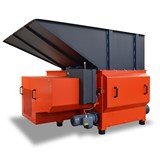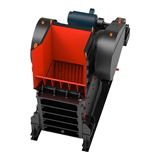Discover how Australian businesses can de-risk global supply chains in 2025. Learn practical strategies, industry-specific risks, and tools to boost resilience and compliance.
Key takeaways
- Geopolitical risks are reshaping supply chain decisions: 84% of Australian businesses have reported supply disruptions due to global events like conflicts, trade tensions, and sanctions (Austrade, 2024).
- High-risk sectors include manufacturing, construction, retail, logistics, and healthcare, with 73% of manufacturers and healthcare providers reporting major disruptions in 2024
- Diversification is essential: Over-reliance on a single country or region (e.g. China) is a top risk factor. Many Australian manufacturers are now sourcing from Vietnam, India, and Mexico.
- Visibility and traceability matter: 67% of procurement leaders cite lack of visibility as a major supply chain risk (Deloitte ANZ, 2024).
- Compliance is tightening: Australia’s Modern Slavery Act and emerging environmental import standards are placing new due diligence obligations on businesses.
- Digital tools like AI and IoT are crucial: Predictive analytics and real-time tracking are helping businesses pre-empt disruptions.
- Local manufacturing is resurging: Backed by government grants, reshoring is a viable strategy for critical components.
- Practical risk management steps: Include multi-sourcing, supplier risk profiling, local backup inventory, and contract clauses that account for disruption.
Introduction: Why supply chain risk is a front-and-centre issue in 2025
Australian businesses are entering 2025 with greater awareness, and urgency, around global supply chain risk than ever before. The COVID-19 pandemic may have first exposed the fragility of just-in-time logistics, but ongoing global events have kept the pressure high.
With geopolitical instability, climate disruptions, and tighter regulatory demands, de-risking your supply chain isn’t just good practice, it’s a business imperative. Whether you import machinery components, raw materials, or finished products, this guide will help you identify actionable strategies to build a more resilient, agile, and compliant supply chain.
Industries most exposed to global supply chain disruption in 2025
While almost every sector in Australia has felt the ripple effects of global supply chain shocks, some industries face greater exposure due to their dependency on offshore manufacturing, imported raw materials, or strict regulatory timelines. Understanding which sectors are most vulnerable can help you benchmark risk and prioritise response strategies.
Manufacturing and advanced manufacturing
Australian manufacturers, particularly those producing electronics, machinery, automotive parts, and medical devices, are highly exposed to disruptions in Asia, especially China, Malaysia, and South Korea. Delays in component imports have created production bottlenecks and increased lead times by up to 6–8 weeks.
Key risks:
- Overreliance on tier 2 and tier 3 component suppliers in China
- Volatile semiconductor availability
- Energy and shipping price volatility
Response strategies:
- Investing in local component fabrication (reshoring)
- Creating strategic safety stock for critical inputs
- Mapping sub-tier supplier dependencies
Construction and infrastructure
Construction firms rely heavily on imported building materials such as steel, glass, prefabricated components, and heavy equipment parts. As of early 2024, lead times for structural steel from overseas suppliers had doubled, affecting project timelines and budgets.
Key risks:
- Shipping delays and port congestion
- Global price spikes on cement, rebar, and electrical systems
- Limited availability of local substitutes
Response strategies:
- Diversifying suppliers to include ASEAN markets
- Working with local fabricators or modular builders
- Adjusting project timelines to factor in uncertainty
Retail and consumer goods
With large portions of retail supply chains tied to offshore production, particularly in apparel, electronics, and packaged goods, global disruption can mean stockouts, lost sales, or compliance issues (e.g. product labelling or sustainability requirements).
Key risks:
- Seasonal product availability tied to global demand
- Modern Slavery Act compliance for apparel imports
- Volatile freight rates impacting margins
Response strategies:
- Better demand forecasting using AI
- Pre-positioning seasonal inventory closer to key markets
- Auditing overseas suppliers for ethical and labour standards
Logistics and transport
Australia’s logistics sector, particularly third-party logistics (3PL) providers and fleet operators, are exposed to upstream disruptions in vehicle, tyre, and fuel supply chains. Global shortages of parts for refrigerated transport and GPS systems have impacted service delivery.
Key risks:
- Delays in acquiring replacement vehicles and components
- Rising fuel costs and limited access to alternate fuels
- Labour shortages compounding supply delays
Response strategies:
- Expanding supplier networks for parts and servicing
- Investing in route optimisation software to reduce impact
- Strengthening relationships with equipment lessors and OEMs
Healthcare and medical supplies
Hospitals, clinics, and medical distributors depend heavily on global supply chains for pharmaceuticals, diagnostic equipment, and PPE. COVID-era backlogs and the concentration of production in a few markets (e.g. India and China) have left this sector vulnerable.
Key risks:
- Regulatory delays in product approvals
- Slow replenishment of critical items (e.g. gloves, masks, reagents)
- New biosecurity and quality requirements for imports
Response strategies:
- Building buffer inventory for essential supplies
- Reshoring key medical product manufacturing
- Collaborating with state procurement hubs for group purchasing
Rethinking single-source dependency
Over-reliance on a single supplier or region remains a top risk factor. Many Australian importers have traditionally leaned heavily on China for industrial inputs, but recent events have forced a rethink.
Practical risks of single sourcing:
- Factory shutdowns due to COVID-19 resurgences in Asia
- Political disputes affecting tariffs or quotas (e.g. barley and wine trade tensions)
- Shipping delays and port congestion
What to do:
- Diversify suppliers across regions (e.g. India, Vietnam, Eastern Europe)
- Create supplier tiers with primary and secondary sources
- Negotiate MOUs with alternative suppliers even if not in current use
- Map critical supply inputs and identify high-dependency nodes
Case example: A Brisbane-based food packaging manufacturer reduced shipping delays by moving 40% of its sourcing from China to Indonesia and Malaysia, where lead times are now 3–4 weeks shorter.
Boosting supply chain visibility and traceability
When disruption strikes, visibility is the difference between adaptation and paralysis. Yet many Australian businesses still lack real-time insight into their tier 2 and tier 3 suppliers.
Key issues:
- Poor visibility beyond tier 1 suppliers
- Inconsistent reporting formats across borders
- Lack of integration between supply chain systems
Actionable solutions:
- Invest in supply chain mapping tools
- Use IoT sensors and real-time shipment tracking
- Implement predictive analytics to spot demand shifts early
- Standardise reporting expectations across suppliers
Stat: According to Deloitte ANZ (2024), 67% of procurement leads say they don't have visibility beyond tier 1 suppliers.
Meeting compliance and ethical sourcing obligations
Beyond operational risks, businesses must now meet increasing legal and ethical responsibilities. In Australia, these go beyond reputational risk, they carry real legal consequences.
What’s changing:
- Modern Slavery Act requires due diligence on labour practices
- Environmental import restrictions on materials (e.g. plastics, timber)
- Carbon border adjustment mechanisms under discussion
What you can do:
- Conduct supplier audits focused on human rights and environmental impact
- Use supplier self-assessment tools
- Document due diligence processes to demonstrate compliance
- Include ethical clauses in contracts
Example: A Melbourne-based apparel importer faced reputational damage after it was revealed one of its overseas suppliers had child labour violations. After switching to a supplier in Bangladesh certified under WRAP, the company restored stakeholder trust and ensured legal compliance.
Leveraging digital tools to de-risk supply chains
Digital transformation is no longer optional. Technologies like AI, IoT, and blockchain are now central to supply chain resilience.
How digital tools help:
- Predictive analytics forecast demand and flag anomalies
- IoT sensors track goods in real time
- Blockchain creates transparent records for traceability
- Cloud-based platforms enable global collaboration and instant updates
Stat: McKinsey reports that businesses using AI-driven supply chain planning can reduce lost sales by up to 65%.
Practical tip: Start small. Apply AI tools to a single high-risk supply line before scaling across the full network.
Reshoring and nearshoring: Bringing production closer to home
Global disruption is renewing interest in domestic and nearshore manufacturing. While not viable for every input, it’s a smart move for critical or time-sensitive components.
Why consider it:
- Reduces shipping time and fuel costs
- Lowers risk of geopolitical exposure
- Greater control over quality and compliance
Australian government support:
- $15 billion National Reconstruction Fund prioritises onshore manufacturing (DFAT, 2024)
- Grants for advanced manufacturing, clean energy, and medical products
Case example: A Sydney-based electronics firm began producing key circuit boards locally through a partnership with an SME manufacturer in Victoria, cutting lead times from 8 weeks to under 2.
Building risk into supplier contracts and procurement policies
Supply chain resilience should be contractually embedded. Many businesses were caught off guard in recent years because their contracts didn’t account for major disruptions.
Clauses to include:
- Force majeure updated for pandemics and trade bans
- Service level agreements (SLAs) with contingency protocols
- Inventory buffer requirements in times of risk
- Early termination clauses for non-compliance or human rights violations
Best practice: Involve legal and procurement teams together when redrafting supplier terms to align commercial expectations with legal enforceability.
Final thoughts: Supply chain risk is a permanent factor
The disruptions of recent years aren’t anomalies, they’re the new reality. Australian businesses that thrive in 2025 and beyond will be those that embed resilience, flexibility, and foresight into their procurement practices.
De-risking your supply chain isn’t about eliminating uncertainty altogether, it’s about building the structures and strategies that allow your business to respond, adapt, and grow in the face of it.










-160x160-state_article-rel-cat.jpg)














